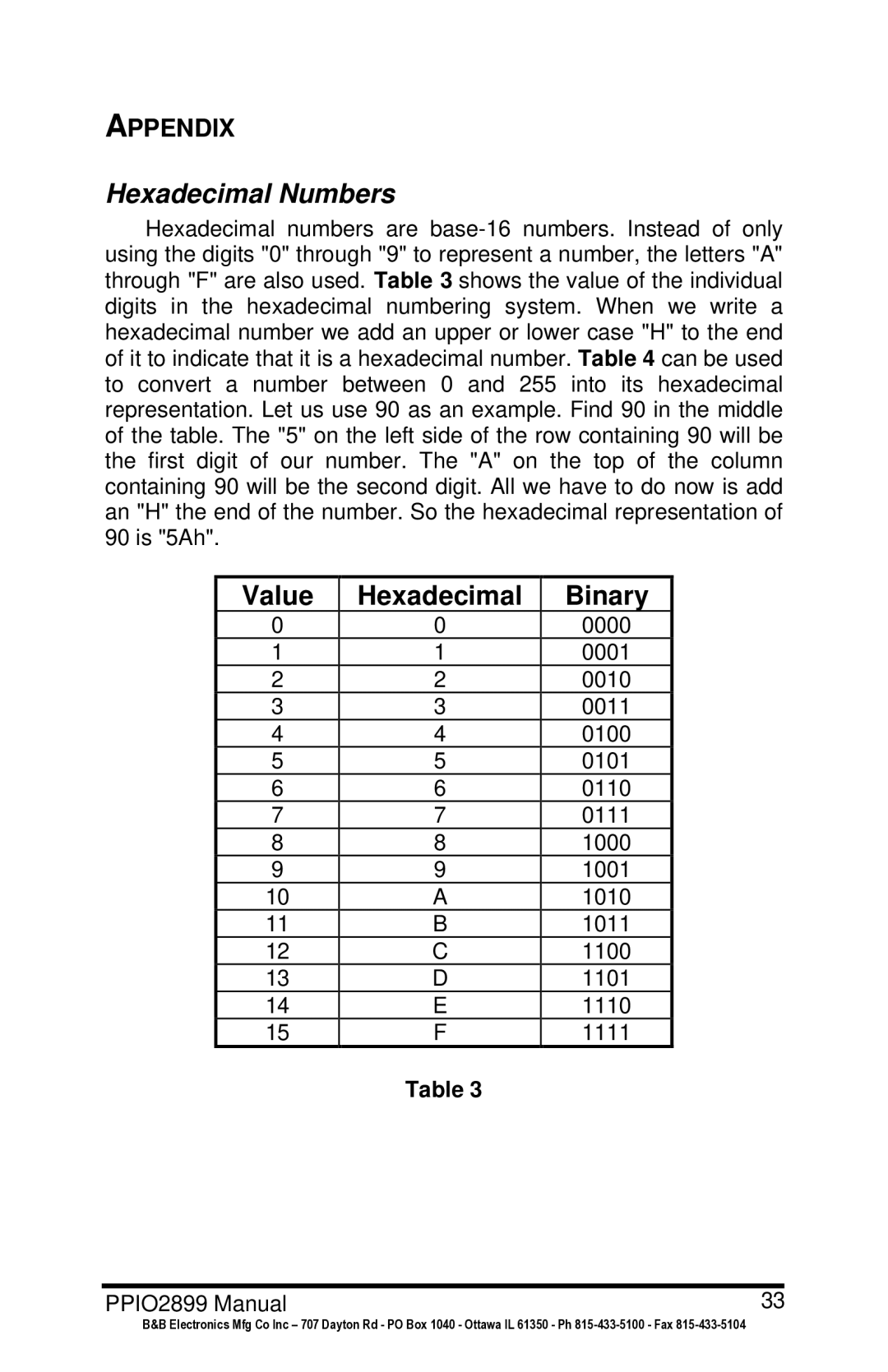APPENDIX
Hexadecimal Numbers
Hexadecimal numbers are base-16 numbers. Instead of only using the digits "0" through "9" to represent a number, the letters "A" through "F" are also used. Table 3 shows the value of the individual digits in the hexadecimal numbering system. When we write a hexadecimal number we add an upper or lower case "H" to the end of it to indicate that it is a hexadecimal number. Table 4 can be used to convert a number between 0 and 255 into its hexadecimal representation. Let us use 90 as an example. Find 90 in the middle of the table. The "5" on the left side of the row containing 90 will be the first digit of our number. The "A" on the top of the column containing 90 will be the second digit. All we have to do now is add an "H" the end of the number. So the hexadecimal representation of 90 is "5Ah".
Value | Hexadecimal | Binary |
0 | 0 | 0000 |
1 | 1 | 0001 |
2 | 2 | 0010 |
3 | 3 | 0011 |
4 | 4 | 0100 |
5 | 5 | 0101 |
6 | 6 | 0110 |
7 | 7 | 0111 |
8 | 8 | 1000 |
9 | 9 | 1001 |
10 | A | 1010 |
11 | B | 1011 |
12 | C | 1100 |
13 | D | 1101 |
14 | E | 1110 |
15 | F | 1111 |
Table 3
B&B Electronics Mfg Co Inc – 707 Dayton Rd - PO Box 1040 - Ottawa IL 61350 - Ph 815-433-5100 - Fax 815-433-5104
